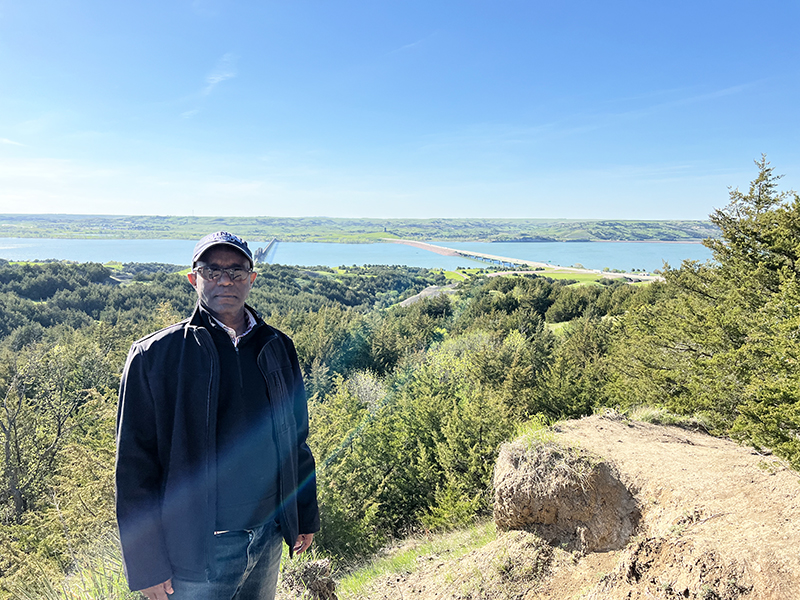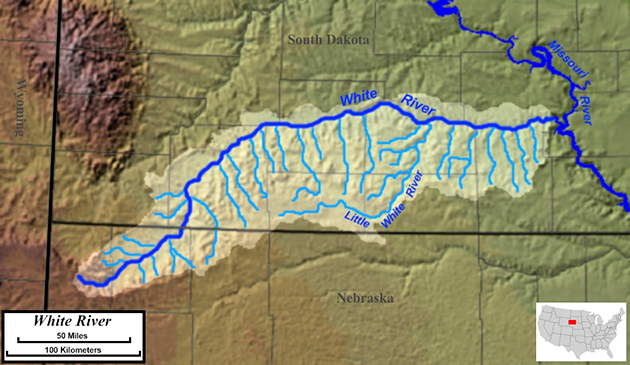South Dakota Mines Partners with Tribal and Farm Communities to Address Water Issues Across the Country

As climate change intensifies, underserved communities without proper infrastructure face significant challenges.
A new collaborative project headed by South Dakota Mines and Venkataramana Gadhamshetty, Ph.D., principal investigator and Mines professor of civil and environmental engineering, is aimed at addressing these issues.
The university recently received $2.7 million of a $6 million grant for the project called Advancing Quality and Climate Resilient Water Management with Community Partnerships and Enhanced Sensor Network (AQUA-CLIME) which will focus on South Dakota’s Oglala Sioux Tribe, the Navajo Nation in New Mexico and flood-prone farming communities in Vermont. Gadhamshetty said these groups are more vulnerable to potential climate change issues.
“To address these challenges, AQUA-CLIME aims to use innovative research methods to develop affordable, AI-driven, real-time monitoring systems, leveraging Indigenous knowledge and innovative sensors to manage water quality and quantity during extreme events,” Gadhamshetty said.
Aside from Mines, the collaboration includes the University of South Dakota (USD), Oglala Lakota College (OLC) as well as the University of Vermont, Norwich University in Vermont, and New Mexico State University, along with various experts across disciplines, including Mines professors Drs. Mengistu Geza, Saurabh Dhiman, Bill Capehart, Scott Kenner, Bharat Jasthi, Heidi Sieverding, Joseph Thalakkottor, and Mary Witlacil; Nick Klein from OLC; and Etienne Gnimpieba from USD.
Each state will have its own project with the same overall goal, Gadhamshetty said. AQUA-CLIME will create a network of cooperation of 350 individuals among Native American communities, farmers, middle and high school students, teachers, industry groups, state agencies, nonprofits, faculty researchers, and undergraduate and graduate students.
Gadhamshetty said a key component of the project is creating partnerships with the communities. “It is important for us to engage with the communities right from the beginning,” he said. “This is where the Indigenous knowledge and community feedback will come into play.”
OLC will connect the researchers and reservation communities in South Dakota and facilitate conversations to determine attitudes and needs regarding climate and water issues, said Klein, research faculty at OLC. “The goal is to develop low-cost remote sensors that could be deployed in reservations or other remote and rural communities. There is a great scarcity of climate data in these areas. “
In South Dakota, sensors will be placed along the Missouri River near the White River.
AQUA-CLIME researchers will produce decision support tools to allow communities to make data-driven decisions on water use for future climate scenarios, added Klein.
The team will use existing models and sensors from the U.S. Geological Survey (USGS), current climate-change and mathematical models to develop their own tools, which will be used to monitor watershed contaminants under diverse climate change scenarios.
“We will leverage microsensors being developed in Vermont,” Gadhamshetty said. “They have a basic framework, and we are going to use our prowess in nanotechnology to innovate and customize them for the problems we are addressing and the specific region of interest.”
The University of Vermont (UVM) team will develop and deploy low-cost multi-sensor arrays and distributed sensor networks that can detect and quantify nutrients and emerging contaminants, including forever chemicals, antibiotic resistance genes, heavy metals, and microplastics in water environments in near- or real-time. “The distributed sensor networks will be deployed in select watersheds in all three jurisdictions to study water quality and quantity issues resulting from regional climate change impacts, such as flooding, drought and wildfires,” said Appala Raju Badireddy, Ph.D., associate professor in the UVM Department of Civil and Environmental Engineering.
The sensor devices will generate data at an unprecedented rate and scale, which then will be integrated with the models to help explain data, as well as the deployment and location of sensors for monitoring water quality and quantity in South Dakota, Vermont and New Mexico, said Badireddy.
The outcomes will reveal underlying gaps about climate change impacts on water quality and quantity facing Indigenous tribes and agricultural communities in the three participating jurisdictions and broadly applicable throughout the United States, added Gadhamshetty. “The goal would be to build the infrastructure, expand the expertise of human knowledge and hardware, and develop scalable models that can be implemented in watersheds across the country.”
The project, however, goes far beyond collecting the data and building an infrastructure. It will build community and academic partnerships that will contribute to climate-resilient water management solutions, develop a future-ready expert workforce, and positively impact the socioeconomic status of disadvantaged communities in the three project areas.
Tara Kulkarni, Ph.D., associate provost for research and chief research officer for Norwich University in Vermont, said they will be providing leadership for workforce development, which includes industry and stakeholder engagement; professional development for junior faculty, research scientists, postdocs, and graduate students; undergraduate education and research; and research experience for K-12.
As the birthplace of the ROTC and the first private university to offer civil engineering, Norwich University has a long history of developing a solid workforce in service of the nation's infrastructure, said Kulkarni.
“With AQUA-CLIME, we have a unique opportunity to connect the academic community with practitioners in industry and tribal nations and develop citizen scientists so that we may tackle wicked problems with affordable and easy-to-use but technologically advanced tools," she said.
Gnimpieba is a research assistant professor of bioinformatics at the USD department of biomedical engineering. The USD team will leverage the team’s dataset to develop a predictive model for water quality assessment. This innovative model will provide an interactive display of how different contaminants, in combination with environmental factors, influence water quality. He emphasized that this project could mark a major advancement in securing a safe and high-quality drinking water supply for the broader community.
Studying the impacts of climate change usually takes decades. However, the AQUA-CLIME team will combine the data it collects from the four-year NSF grant with the historical data to create long-term infrastructure solutions.
“We intend to use machine learning tools to bring models to a point where we can leverage it with historically available data and the data we will generate over four years,” Gadhamshetty. “Then we will try to predict what will happen in 10 years, 20 years.”
He acknowledged the valuable support of research scientists and graduate students, collaborators at Mines and other institutions and the prior support from the NSF and other federal agencies. “This all laid the foundation for this ongoing research efforts.”